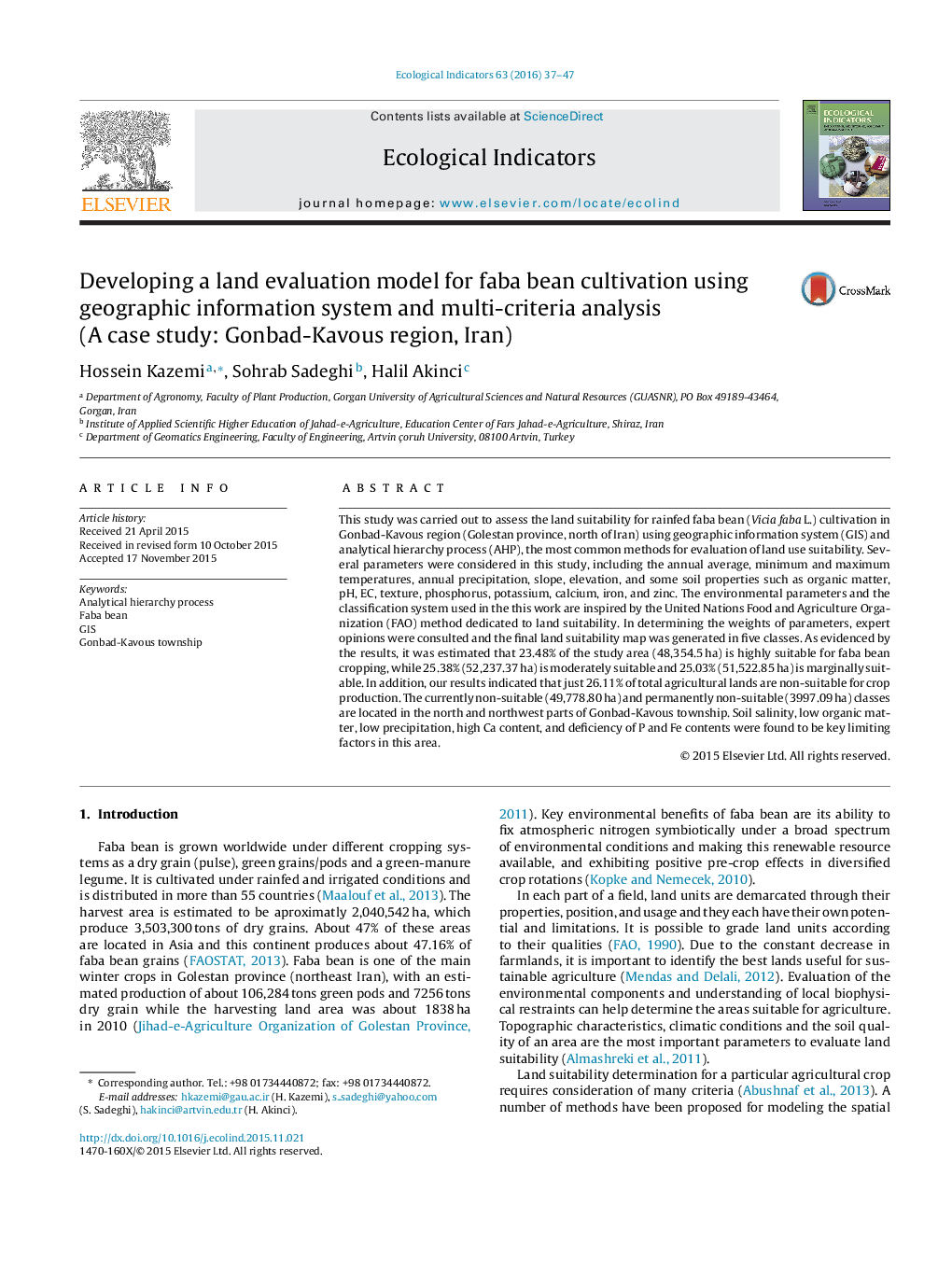| Article ID | Journal | Published Year | Pages | File Type |
|---|---|---|---|---|
| 6293809 | Ecological Indicators | 2016 | 11 Pages |
Abstract
This study was carried out to assess the land suitability for rainfed faba bean (Vicia faba L.) cultivation in Gonbad-Kavous region (Golestan province, north of Iran) using geographic information system (GIS) and analytical hierarchy process (AHP), the most common methods for evaluation of land use suitability. Several parameters were considered in this study, including the annual average, minimum and maximum temperatures, annual precipitation, slope, elevation, and some soil properties such as organic matter, pH, EC, texture, phosphorus, potassium, calcium, iron, and zinc. The environmental parameters and the classification system used in the this work are inspired by the United Nations Food and Agriculture Organization (FAO) method dedicated to land suitability. In determining the weights of parameters, expert opinions were consulted and the final land suitability map was generated in five classes. As evidenced by the results, it was estimated that 23.48% of the study area (48,354.5Â ha) is highly suitable for faba bean cropping, while 25.38% (52,237.37Â ha) is moderately suitable and 25.03% (51,522.85Â ha) is marginally suitable. In addition, our results indicated that just 26.11% of total agricultural lands are non-suitable for crop production. The currently non-suitable (49,778.80Â ha) and permanently non-suitable (3997.09Â ha) classes are located in the north and northwest parts of Gonbad-Kavous township. Soil salinity, low organic matter, low precipitation, high Ca content, and deficiency of P and Fe contents were found to be key limiting factors in this area.
Related Topics
Life Sciences
Agricultural and Biological Sciences
Ecology, Evolution, Behavior and Systematics
Authors
Hossein Kazemi, Sohrab Sadeghi, Halil Akinci,
